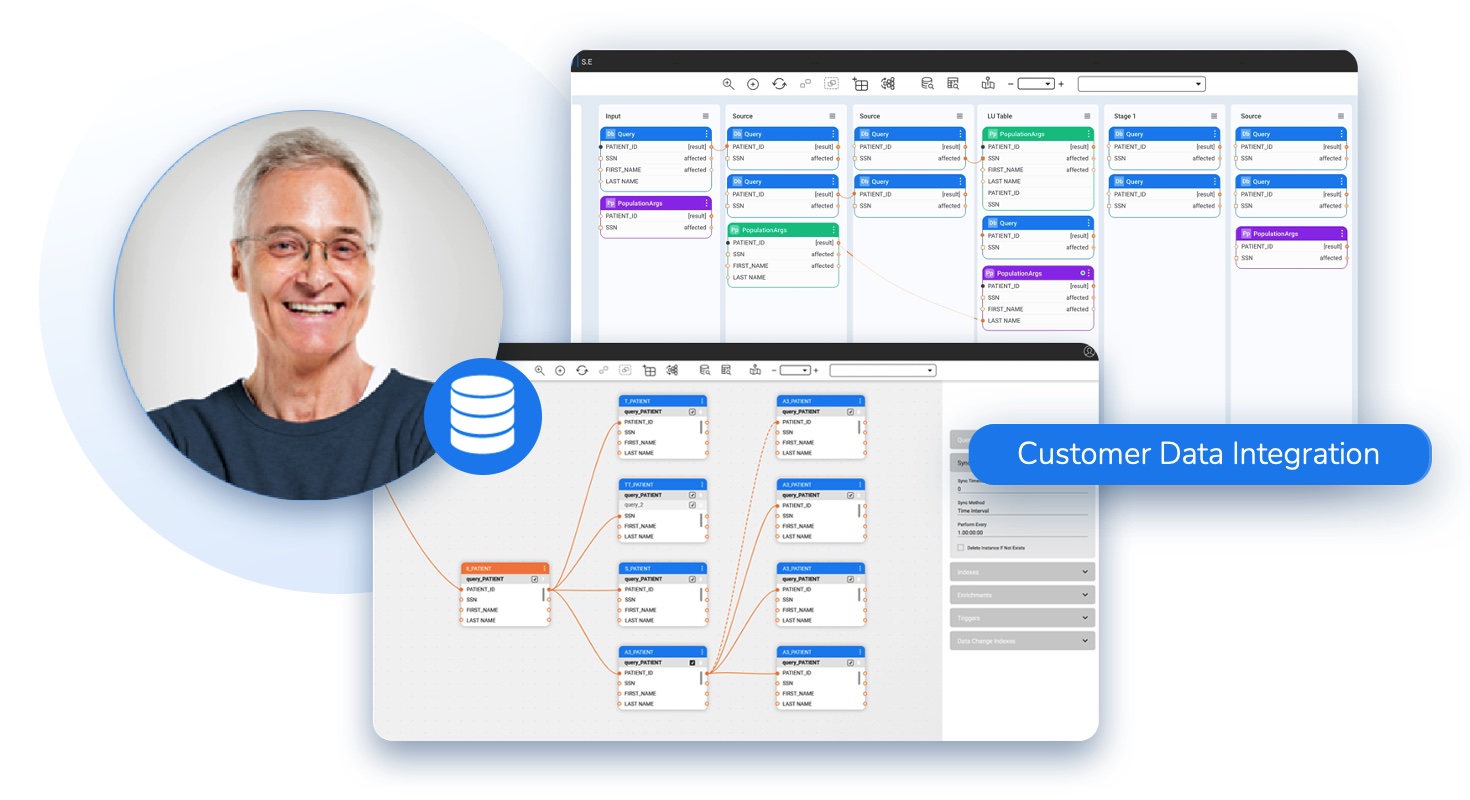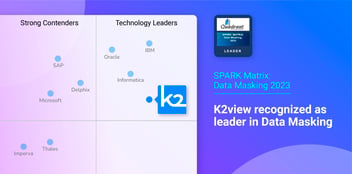Customer data integration, the key ingredient of Customer 360, continues to evade most enterprises. Why is that, and what can be done about it? Read on to find out.
Table of Contents
What is Customer Data Integration?
Customer Data Integration Challenges
Why CRM, MDM, and CDP Fail
Customer Data Integration via Data Products
Achieving Customer 360 with Data Product Platform
What is Customer Data Integration?
Customer data integration is the process of defining, aggregating, and managing customer information from different business units and databases into a single, more accessible form. The objective of customer data integration is to create a “single source of truth” about your customers.
This holistic, complete view of the customer – commonly called Customer 360 – is vital to improving business performance, especially for marketing, sales, and customer success. Enterprises invest heavily in customer data integration efforts in order to:
-
Increase sales
-
Improve the customer experience
-
Enhance product adoption and profitability
-
Enable better compliance with data privacy regulations
Despite these investments, the vast majority of companies struggle to integrate data effectively. Only 14% of enterprises have achieved a 360-degree view of the customer, according to Gartner.
In this article, we’ll discuss the top challenges of customer data integration, and how to overcome them with a data product approach.
Customer Data Integration Challenges
Customer data integration is one of the most significant hurdles enterprises face when trying to achieve a 360-degree customer view. Here are the 5 top challenges associated with integrating customer data across the enterprise.
-
Disparate data sources
Valuable customer data may be dispersed across hundreds of source systems, including third-party systems and “shadow IT”. Successfully integrating customer data into a single, complete view requires identifying where important data resides, and having the right systems and processes in place to map and consolidate it. -
Different data formats
Different business units and technologies often store data in different formats, which makes it difficult to process and integrate. -
Poor data quality
A wide range of factors can reduce the quality and consistency of your data. Reliance on manual processes for data entry and maintenance, duplicative data entry across business units, and lack of data governance standards can all impact data quality. When data is inaccurate and unreliable, it cannot be trusted. -
Lack of scalability
Enterprises generate more data every day. Not to mention, adopting new software or acquiring companies can create massive data influxes that overwhelm conventional customer data integration tools – especially if they’re not built to scale. -
Data governance and security
When dealing with customer data, it’s important to stay vigilant about security and compliance issues. If it’s necessary to integrate data sets that contain personally identifiable information (PII), you must ensure your integration solution is designed to comply with all relevant regulations.
Why CRM, MDM, and CDP Fail
Good intentions
Customer Relationship Management (CRM) solutions are designed to manage a company’s relationships and interactions with existing and potential customers. A CRM system supports sales and contact management, marketing and service data, agent productivity, and more. Many business domains, including sales, marketing, digital commerce, and customer service, use a CRM to manage the customer lifecycle.
Master Data Management (MDM) describes a process that aims to organize customers, product, and supplier data in a uniform way. MDM can improve data quality by ensuring the key data elements of business entities are accurate and consistent across the enterprise. It also improves the reliability of Business Intelligence (BI) and analytics applications.
Customer Data Platform (CDP) optimizes the timing and targeting of marketing campaigns by unifying customer interaction data (web, email, chat, and phone).
Bad results
None of these tools are capable of delivering a complete 360-degree view of the customer.
A CRM only handles the data it owns, such as sales, marketing, and service data. While important, these datasets don’t represent a complete picture of the customer. Valuable data from other source systems and apps, which do not integrate with the CRM, are left out.
While an MDM is great at consolidating data from a variety of sources, it doesn’t handle data related to customer interactions or transactions, which are essential for a true 360-degree view.
CDP is focused on marketing, with no support for customer service, MDM, data governance (data quality and compliance), or sales – essentially creating yet another customer data silo.
Customer Data Integration via Data Products
With a data product approach, you can leverage your unfinished data integration projects and achieve true Customer 360 in weeks.
Unlike CRMs, CDPs, MDMs, and data lakes, a data product approach gives organizations a business-driven, outcome-focused way to manage customer data – immediately creating value for the company, and a common language for all stakeholders.
Customer data products continuously and consistently ingest customer data from multiple sources to deliver a 360-degree dataset for every single customer.
Achieving Customer 360 with Data Product Platform
On a Data Product Platform, every instance of a customer data product corresponds to an individual customer. While most customer data integration tools centralize data in one giant repository, a Data Product Platform persists and manages every instance of a customer data product in its own individually encrypted Micro-Database™. The result is unparalleled speed, relevance, and accuracy.
The platform ensures that clean, complete, and compliant customer data is accessible to authorized data consumers in any method, in real time, and via self-service. It increases speed and agility, while ensuring data quality and governance are enforced on the fly.
The days of pouring valuable budget into incomplete customer data integration strategies are gone. With a data product approach, you can quickly realize the full benefits of Customer 360 and transform your business.













